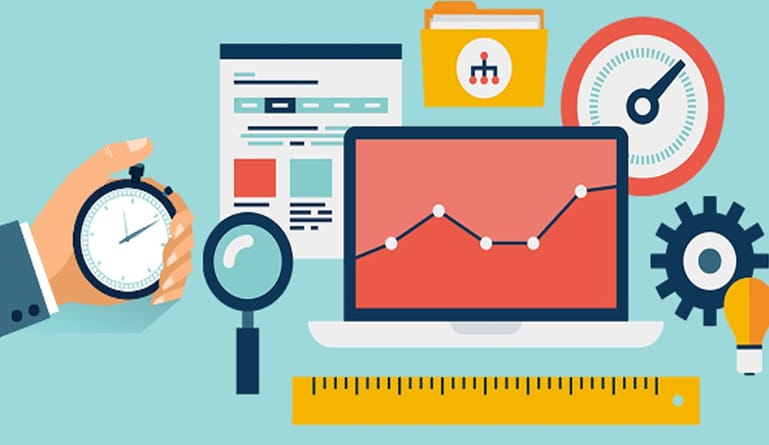Improve your business with HR benchmarking metrics.
HR benchmarking metrics can drastically improve your company’s ability to meet their business goals and objectives. If you follow this four-phase model, you’ll be sure to improve your business’s strategy and the business itself.
HR metrics SHRM models outline a four-phase process to assist HR professionals to improve the alignment of their HR metrics formulas with their business strategy. To ensure these metrics align with the desired outcomes the company has in mind, human resources professionals should compare their metrics to similar organizations. This comparison will ensure the human capital metrics align with the business strategy, outline the importance of benchmarking, interpret HR benchmarking data and define key HR metrics.
Top HR Benchmarking Metrics
The first phase of a successful HR benchmarking metrics process is to align human capital metrics to the business strategy. The U.S. and other industrialized nations are rapidly shifting to a knowledge economy, increasing the importance of human capital. The best human capital metrics include HR practices, work practices, and people management strategies because human capital extends beyond the HR function to include your company’s total strategy. Human capital is an asset that drives value and optimizes your company’s performance. This is why showing which HR practices that improve your business performance are essential but also hard to show. This is where the SHRM Workforce Analytics Model comes into play to provide a framework for HR departments to develop, build and implement the best metrics for their company. The four-phase model consists of the following steps:
- Assess & Plan
- Link & Align
- Identify & Build
- Implement & Execute
Assess & Plan
This is the initial phase of the SHRM model and during this phase, HR needs to understand the strategy, plans, and goals of their company. This phase requires understanding areas outside of HR, so it is necessary to create a metrics team with employees from different departments to build the credibility of the metrics this team comes up with. During this phase remember, the more people in your organization, the bigger the team needs to be.
Link & Align
This phase of the model will answer the question, “what impact does the business strategy have on the workforce?” Only by answering this question will it be possible for you to identify workforce drivers that support the business strategy. Being able to answer this question will allow you to know if you need to hire additional retail staff, provide training or develop onboarding practices for new hires. In this phase, it is crucial that you link and align the business strategy with the human capital performance management system which can be done by identifying KPIs. These KPIs indicate the efficiency and effectiveness of how the company is achieving goals and objectives.
Identify & Build
This is the phase where HR departments must determine the metrics and analytics that support the workforce drivers for each function of HR. Once HR has decided upon these metrics, they’ll have access to data that will help them to determine how quickly they can fill positions, the number of recruiters they’ll need to meet their hiring goals and how much the company will need to invest for these recruitment measures. During this phase, it is essential to keep in mind that these metrics must support the business strategy.
Implement & Execute
During this phase, your HR team will be able to specify how often the analytics they gather will be delivered and to who they’ll be delivered to. To ensure the quality of the data they’re gathering and distributing is of the highest level, HR professionals should include a feedback loop. This feedback loop will allow them to receive comments from internal customers, allowing them to make any needed improvements to their quality data collection.
HR benchmarking metrics can drastically improve the quality of data your company uses to ensure that it’s achieving their business strategy goals and objectives. When your company has no data to ensure that they’re achieving their goals, their business strategy will fall flat, and the business will not be as successful as it could be. If your business hasn’t implemented HR benchmarking metrics yet, now is a great time to create a more successful business strategy that includes one.




